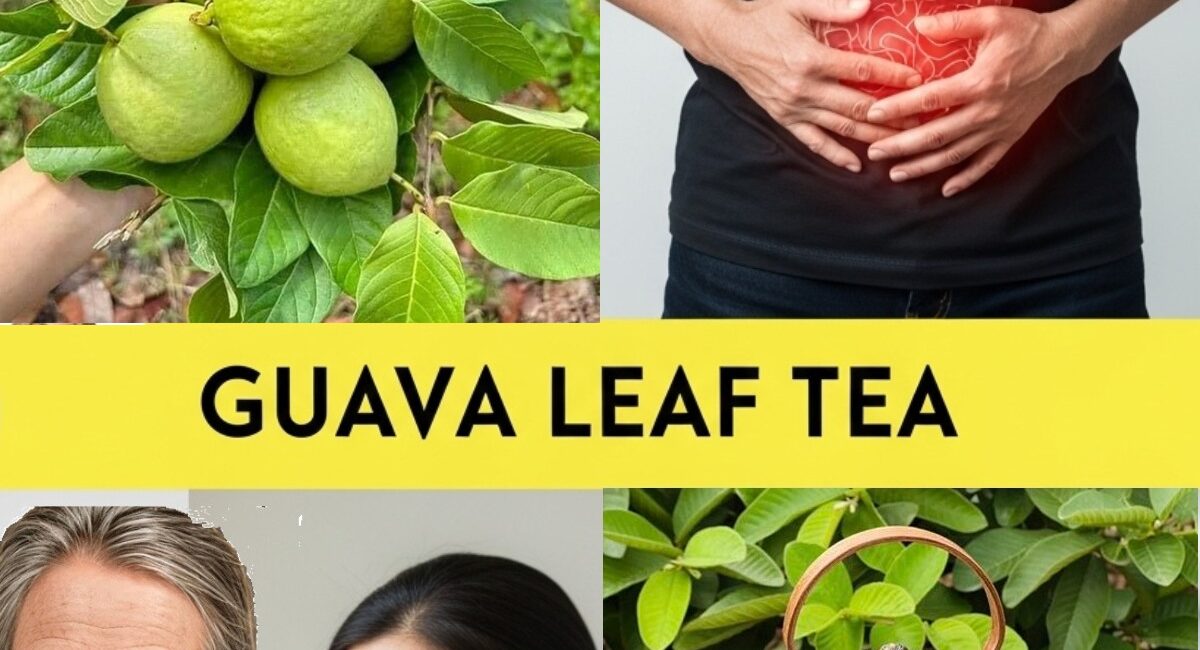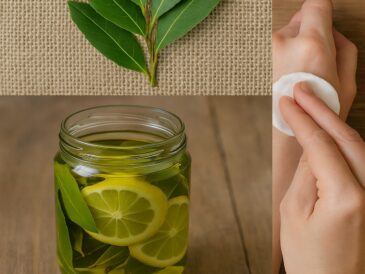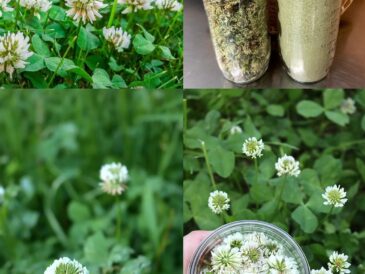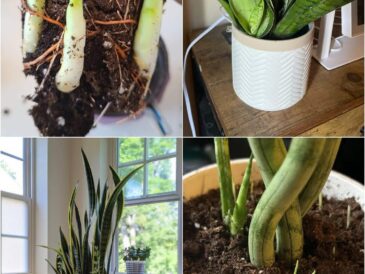Introduction
In the quest for managing blood sugar and improving overall health, millions turn to natural remedies alongside conventional medicine. Among these, one simple, affordable, and surprisingly potent remedy stands out—guava leaf tea. While many are familiar with guava fruit for its sweet taste and nutrition, the leaves of the guava tree have long been revered in traditional medicine and are now increasingly validated by modern science.
Guava leaves contain an impressive array of bioactive compounds that may help regulate blood sugar, reduce cholesterol, lower blood pressure, ease joint pain, and support kidney health. This comprehensive article explores the extensive health benefits of guava leaves, especially their role in managing diabetes and related metabolic disorders. You will also find detailed, step-by-step guidance on how to harvest, prepare, and use guava leaf tea for maximum benefit.
Why Guava Leaves Matter for Blood Sugar Stability
Bioactive Compounds in Guava Leaves
The therapeutic effects of guava leaves largely stem from their rich content of flavonoids, polyphenols, and tannins. The most studied flavonoid is quercetin, a powerful antioxidant known to support insulin sensitivity and combat inflammation.
- Flavonoids (Quercetin): Help improve insulin function and reduce oxidative stress.
- Polyphenols: These compounds slow the absorption of carbohydrates, preventing rapid blood sugar spikes after meals.
- Tannins: Possess anti-inflammatory and antimicrobial properties, contributing to overall metabolic health.
How Guava Leaves Help Blood Sugar Control
Scientific research and traditional wisdom suggest that guava leaves aid blood sugar control through multiple mechanisms:
- Slow Carbohydrate Absorption: By inhibiting enzymes responsible for carbohydrate digestion, guava leaves slow the conversion of carbs into glucose, moderating blood sugar surges post meals.
- Enhance Insulin Sensitivity: The compounds in guava leaves improve how cells respond to insulin, enabling more efficient glucose uptake.
- Protect Pancreatic Cells: Guava leaves may support pancreatic beta-cell health, essential for natural insulin production.
- Lower Blood Sugar Levels: Several studies confirm that regular consumption of guava leaf tea helps reduce fasting and postprandial blood glucose.
For those managing Type 2 diabetes, prediabetes, or metabolic syndrome, guava leaves offer a natural adjunct to conventional treatments, with fewer side effects and additional holistic benefits.
Other Health Benefits of Guava Leaf Tea
Beyond blood sugar management, guava leaves bring multiple benefits relevant to common chronic health challenges:
- Kidney Support: Guava leaf compounds can help reduce kidney inflammation and oxidative damage, potentially supporting renal function.
- Lowering Cholesterol: Guava leaf tea has been shown to reduce LDL (bad) cholesterol and increase HDL (good) cholesterol, aiding heart health.
- Blood Pressure Regulation: The leaves’ vasodilatory effects help relax blood vessels, promoting healthier blood pressure levels.
- Joint Pain Relief: Anti-inflammatory properties may alleviate symptoms of arthritis and joint discomfort.
- Digestive Aid: Guava leaf tea can soothe the digestive tract and reduce diarrhea due to its antimicrobial effects.
This breadth of benefits makes guava leaves a powerful, multipurpose herbal remedy suitable for many chronic conditions often linked with diabetes and metabolic disorders.
How to Select and Harvest Guava Leaves for Maximum Benefit
To fully harness guava leaves’ medicinal qualities, proper harvesting is critical.
Best Time to Harvest
- Morning Harvest: The early morning hours, after dew has evaporated but before midday heat, provide the highest concentration of beneficial compounds.
- Choose Mature Leaves: Look for vibrant green leaves that are firm but not overly tough. Avoid very young shoots or older, yellowing leaves as they may contain fewer nutrients.
Harvesting Technique
- Use sanitized garden scissors or pruning shears to gently clip 2-3 leaves per branch.
- Avoid damaging the tree and do not over-harvest from one branch to allow healthy regrowth.
- Select leaves free of insect damage, disease spots, or dust.
- Rinse leaves lightly under clean water before drying.
How to Dry and Store Guava Leaves for Year-Round Use
Drying guava leaves properly preserves their potency and allows convenient, year-round use.
Natural Air-Drying Method
- Rinse freshly harvested leaves to remove dirt or insects.
- Pat dry with a clean towel to remove surface moisture.
- Arrange leaves in a single layer on a mesh rack or clean cloth in a shaded, well-ventilated place.
- Avoid direct sunlight, which can degrade essential oils and antioxidants.
- Turn leaves daily to ensure even drying.
- Drying takes about 7-10 days; leaves are ready when crisp and easily crumble.
Alternative Drying: Oven or Dehydrator
- For quicker drying, use a dehydrator set at 95-115°F (35-46°C) until leaves are brittle.
- Avoid high heat, which reduces efficacy.
Storage
- Store dried leaves in airtight glass jars or sealed paper bags.
- Keep in a cool, dark pantry or cupboard away from moisture and light.
- Properly stored guava leaves maintain potency for up to 1 year.
Two Best Ways to Make Guava Leaf Tea
Method 1: Brewing Guava Leaf Tea (Hot Infusion)
Ingredients:
- 5 to 7 fresh or dried guava leaves
- 2 cups of clean water
- Optional: cinnamon stick or ginger slice for extra flavor and health benefits
Instructions:
- Rinse fresh guava leaves under clean water.
- Bring 2 cups of water to a boil in a small pot.
- Add the guava leaves (and optional cinnamon/ginger) and reduce heat to simmer.
- Simmer gently for 10-12 minutes.
- Strain the tea into a cup and let it cool slightly.
- Drink one cup before meals, once or twice daily.
Note: Drinking before meals helps slow carbohydrate absorption and reduce blood sugar spikes.
Method 2: Guava Leaf Powder for Daily Use
Preparation of Powder:
- After drying guava leaves thoroughly, crush them by hand or use a spice grinder.
- Sift to a fine powder for easy consumption.
- Store powder in an airtight container.
Usage:
- Mix half a teaspoon of powder into smoothies, yogurt, or warm water with a squeeze of lemon.
- Consume once daily, preferably in the morning or before the main meal.
Advantages: The powder is convenient, portable, and can be incorporated into various dishes.
Alternative Traditional Method: Soaking Fresh Guava Leaves
For a milder tea, soak 5-7 fresh guava leaves in 2 cups of water overnight in a covered container. Drink the infused water on an empty stomach in the morning. This method extracts fewer compounds but offers a gentle, consistent intake.
Scientific Evidence Supporting Guava Leaf Benefits
A growing body of research confirms the traditional claims about guava leaf tea:
- A study published in the Journal of Medicinal Food found that guava leaf extract significantly lowered blood glucose levels in diabetic rats by improving insulin sensitivity.
- Clinical trials have shown guava leaf tea consumption reduced blood sugar spikes in prediabetic humans after meals.
- Antioxidant tests reveal high polyphenol content correlating with reduced oxidative stress, a key factor in diabetes complications.
- Research indicates guava leaf compounds inhibit alpha-glucosidase, an enzyme involved in carbohydrate digestion, thereby slowing glucose absorption.
Precautions and Considerations
While guava leaves are generally safe, keep these points in mind:
- Consult your doctor if you are pregnant, breastfeeding, or taking blood sugar-lowering medications to avoid interactions.
- Guava leaf tea should not replace prescribed diabetes medications unless advised by a healthcare professional.
- Start with small doses to monitor tolerance.
- Excessive consumption may cause mild digestive upset in some individuals.
How to Incorporate Guava Leaf Tea Into Your Daily Routine
- Consistency is key: Regular intake yields better results.
- Pair with healthy diet and exercise: Guava leaf tea is a supportive, not sole, treatment.
- Track your blood sugar: Monitor how your body responds and adjust intake accordingly.
- Combine with other natural strategies: Use alongside a balanced diet rich in fiber, lean proteins, and healthy fats.
Other Health Conditions Improved by Guava Leaf Tea
Kidney Health
The anti-inflammatory and antioxidant properties of guava leaves may reduce kidney inflammation and oxidative damage, assisting in the management of diabetic nephropathy.
Cardiovascular Health
By reducing LDL cholesterol and improving blood pressure, guava leaf tea promotes overall heart health, reducing risks common among diabetics.
Joint Pain and Inflammation
Anti-inflammatory flavonoids help alleviate joint pain and symptoms of arthritis, common comorbidities in metabolic diseases.
Conclusion: Nature’s Simple Remedy for Complex Problems
Guava leaf tea is more than just a comforting herbal drink—it’s a natural, multifaceted health aid with particular promise for those struggling to control blood sugar. Its ability to slow carbohydrate absorption, boost insulin sensitivity, and protect pancreatic cells makes it a valuable addition to diabetes management.
By mastering the simple art of harvesting, drying, and brewing guava leaves, anyone can tap into this age-old remedy’s profound benefits. When combined with a balanced lifestyle, guava leaf tea may become an essential ally in your journey to better health.
Final Thoughts and Sharing Knowledge
If you or someone you love is managing diabetes, high cholesterol, blood pressure, or joint pain, consider adding guava leaf tea to your wellness toolbox. Natural remedies like this remind us that sometimes, the most effective medicine is found in the quiet leaves of nature.
Feel free to share this knowledge widely—because small leaves can lead to big health changes.




